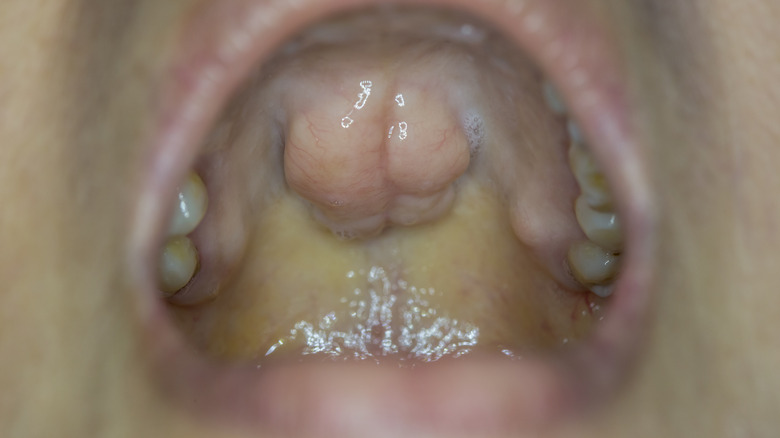The Growth Only Some People Have On The Roof Of Their Mouth
If you press your tongue to the roof of your mouth, what do you feel? It is likely you detect a hard palate encased by smooth ridges. No matter what your genetics or background have to say, most of us have a mouth that is made up of the same oral anatomy. The teeth, tongue, and gums are what come to mind — along with the hard palate you just pressed your tongue against. MSD Manual offers a medical overview and lists the salivary glands, mucous membranes, and uvula to be additional parts that can be found when we open up our mouths and say "ahh." The makings of our mouths may be similar, though surprisingly enough, there is something extra that can be found in the mouths of a select percentage of the population.
Enter the torus palatinus. Healthline states that it is a growth located on the roof of the mouth. Firstly, it's important to note that this growth is painless and not a danger to your health.
The torus palatinus can grow and shrink with age
According to NCBI, the torus palatinus can range in shape and size. Though not painful, it may require surgical intervention if it is big enough to disturb a person's speech or the way they chew. If you notice that you have torus palatinus, know that it may eventually change in size. Healthline states that torus palatinus becomes visible around the age of puberty and that the mass can keep growing throughout adulthood. In some cases, it will start to shrink during later stages of life.
Medical News Today shares that medical experts are still unsure over what causes torus palatinus, which is found in around 20% to 30% of the U.S. population. However, there are some potential increased risk factors such as tooth grinding, genetics, mouth size, and bone mineral density.
If you press your tongue up to the roof of your mouth and feel a hard palate, as well as a bony mass in the middle, then it is likely torus palatinus. The growth shouldn't bother you. But if you ever notice a time when it does, make an appointment with your doctor so you can find the right method of treatment.


